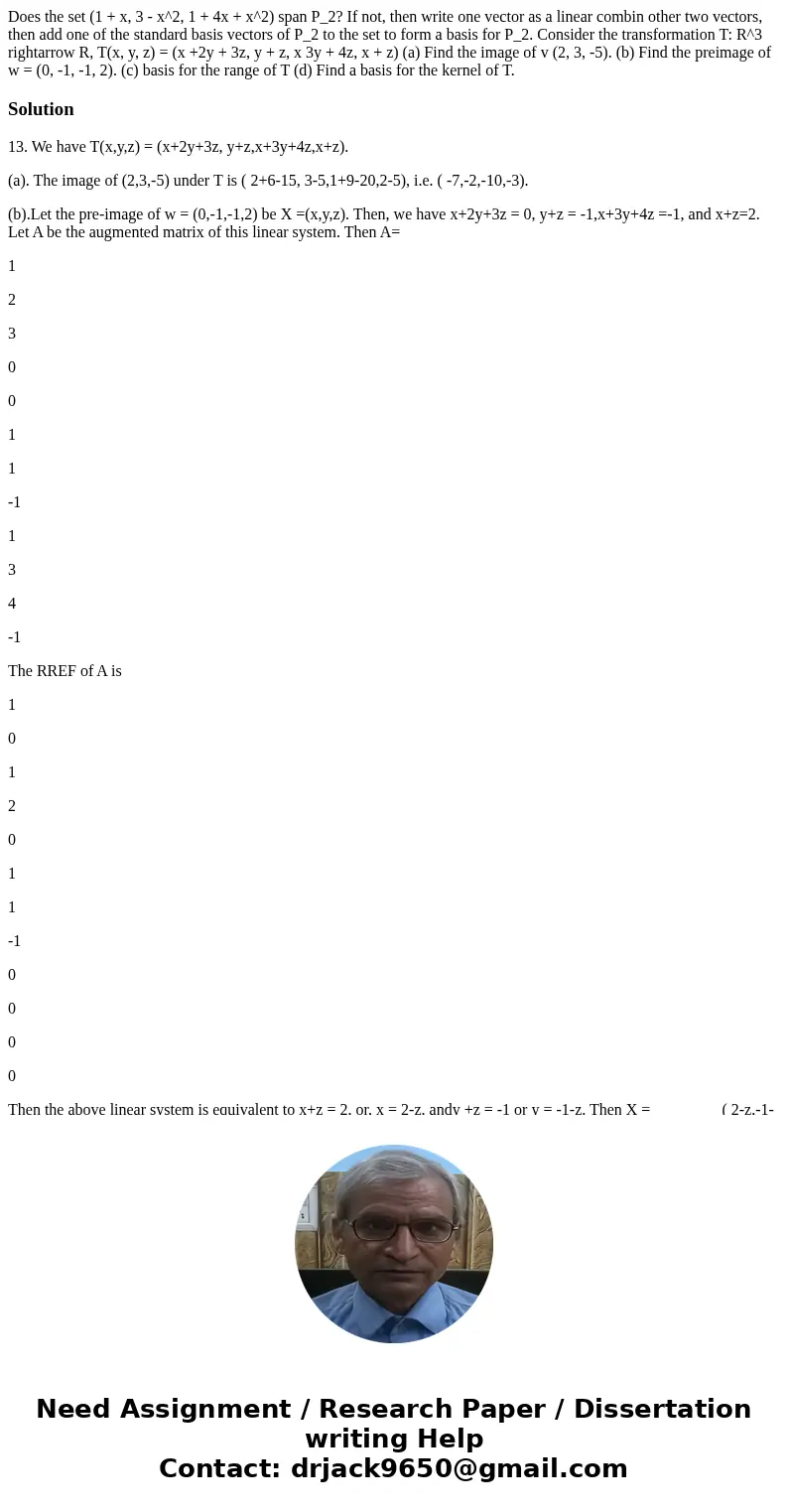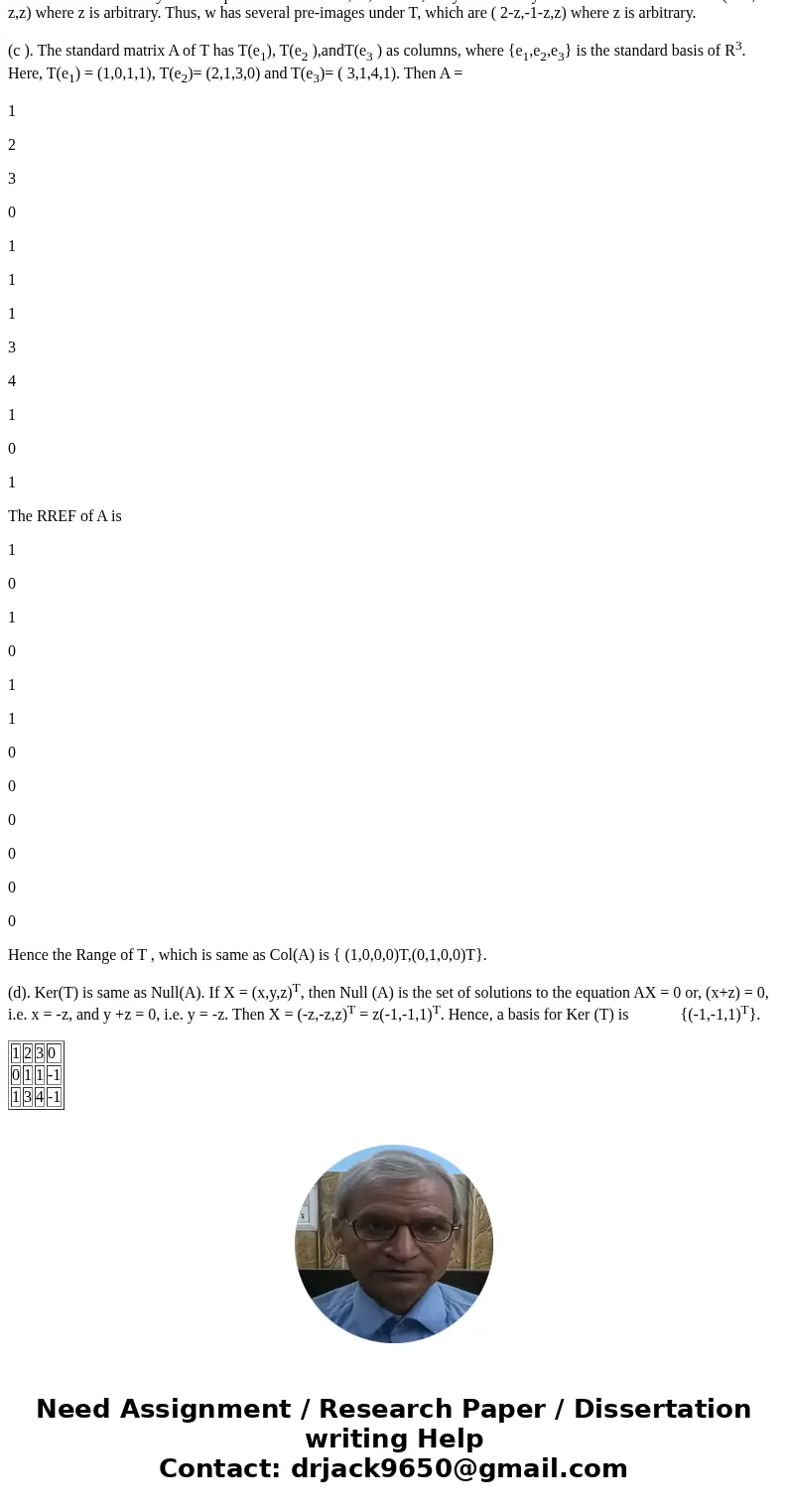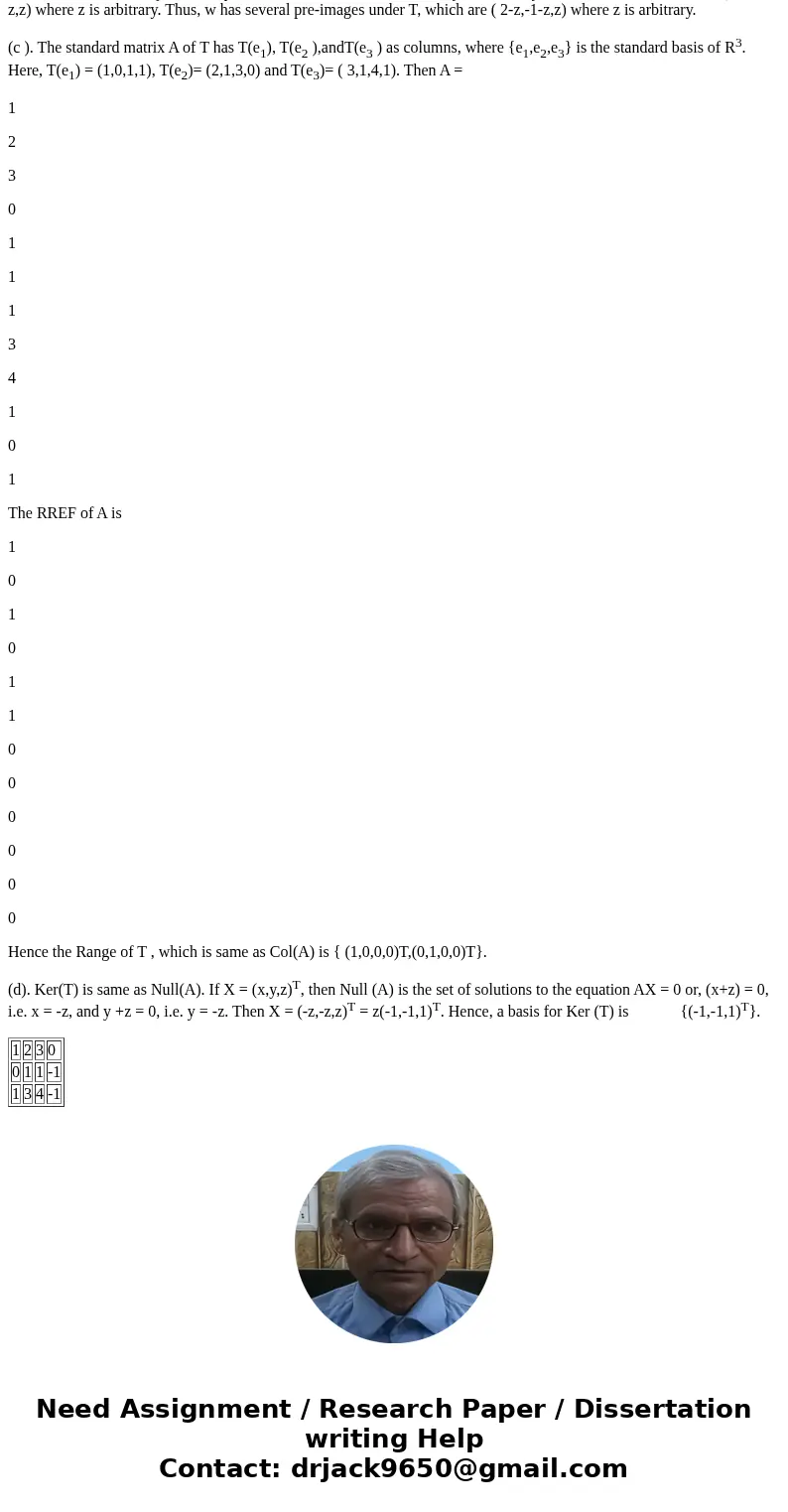Does the set 1 x 3 x2 1 4x x2 span P2 If not then write
Solution
13. We have T(x,y,z) = (x+2y+3z, y+z,x+3y+4z,x+z).
(a). The image of (2,3,-5) under T is ( 2+6-15, 3-5,1+9-20,2-5), i.e. ( -7,-2,-10,-3).
(b).Let the pre-image of w = (0,-1,-1,2) be X =(x,y,z). Then, we have x+2y+3z = 0, y+z = -1,x+3y+4z =-1, and x+z=2. Let A be the augmented matrix of this linear system. Then A=
1
2
3
0
0
1
1
-1
1
3
4
-1
The RREF of A is
1
0
1
2
0
1
1
-1
0
0
0
0
Then the above linear system is equivalent to x+z = 2, or, x = 2-z, andy +z = -1 or y = -1-z. Then X = ( 2-z,-1-z,z) where z is arbitrary. Thus, w has several pre-images under T, which are ( 2-z,-1-z,z) where z is arbitrary.
(c ). The standard matrix A of T has T(e1), T(e2 ),andT(e3 ) as columns, where {e1,e2,e3} is the standard basis of R3. Here, T(e1) = (1,0,1,1), T(e2)= (2,1,3,0) and T(e3)= ( 3,1,4,1). Then A =
1
2
3
0
1
1
1
3
4
1
0
1
The RREF of A is
1
0
1
0
1
1
0
0
0
0
0
0
Hence the Range of T , which is same as Col(A) is { (1,0,0,0)T,(0,1,0,0)T}.
(d). Ker(T) is same as Null(A). If X = (x,y,z)T, then Null (A) is the set of solutions to the equation AX = 0 or, (x+z) = 0, i.e. x = -z, and y +z = 0, i.e. y = -z. Then X = (-z,-z,z)T = z(-1,-1,1)T. Hence, a basis for Ker (T) is {(-1,-1,1)T}.
| 1 | 2 | 3 | 0 |
| 0 | 1 | 1 | -1 |
| 1 | 3 | 4 | -1 |



 Homework Sourse
Homework Sourse